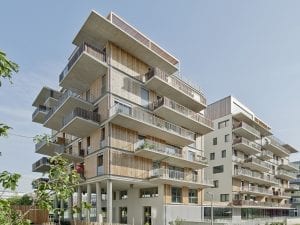Recent years have seen a new revolution in the field of robotics, with automation moving out of the sphere of heavy industry and into that of everyday life, from delivery drones to increasingly autonomous cars and trains, “smart” homes and workplaces. And the work of designers is increasingly key to this field in shaping the interfaces that mediate between humans and machines. In the first exhibition to tackle the radical redefinition of artificial intelligence over the last decade, Vitra Design Museum, Weil am Rhein, both demonstrates the many forms that digital bodies take today and raises awareness of the ethical, social and political issues – particularly as automation both promises and threatens a radical transformation of our economies and the very idea of work.
Hello, Robot: Design between Human and Machine comprises more than 200 exhibits from the fields of design and art, and includes automated technologies used in the home, in nursing care, and in industry, as well as computer games, media installations, and examples of films and literature. It reveals the many new forms that machines take in an interconnected, digital age, ranging from communicative domestic appliances – the so-called Internet of Things, to the self-learning algorithms in computer programmes, known as bots.
Split into four sections, this unique event casts a voyeuristic gaze into the future. The first section traces the fascination that artificial humans have long exerted and looks at how popular culture has shaped our perception of machinery. Another is devoted to the field in which robotics first made a breakthrough: industry and the world of work. Whereas automated beings are typically depicted in this context as a threat to jobs, Vitra looks at the current debate on this subject from a number of perspectives.
The spectrum of exhibits ranges from classic industrial androids to an installation by the group RobotLab, in which an automaton produces manifestos on a production line, thus questioning where the boundary lies between work that can be automated and human creativity. The third section shows how we are gradually coming face to face with the new technology – as a friend and helper in our everyday lives, in our households, or in nursing care. The final part looks at the increasing blurring of the boundaries between humans and robots – exemplified by our living in “learning” buildings, travelling through “smart cities”, or having smart sensors implanted in our bodies. Throughout, viewers are faced with the question of the designer’s responsibility.
Hello, Robot: Design between Human and Machine,11 February – 14 May, Vitra Design Museum, Weil am Rhein. www.design-museum.de
Credits:
1. Joris Laarman for MX3D Bridge Project. Courtesy of Vitra Design Museum.





